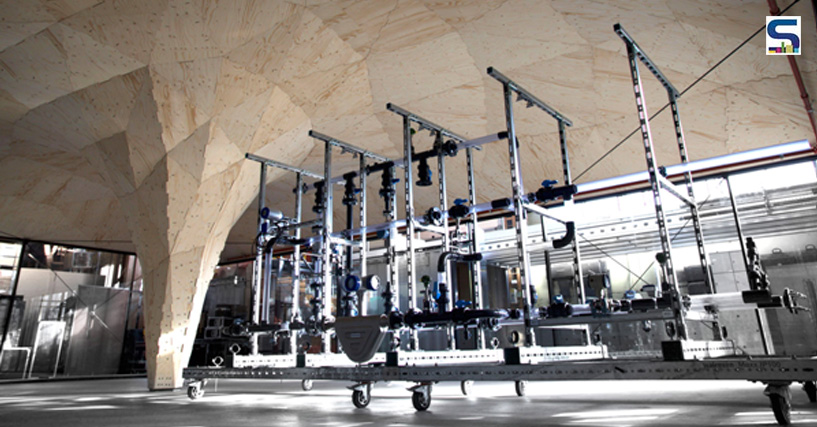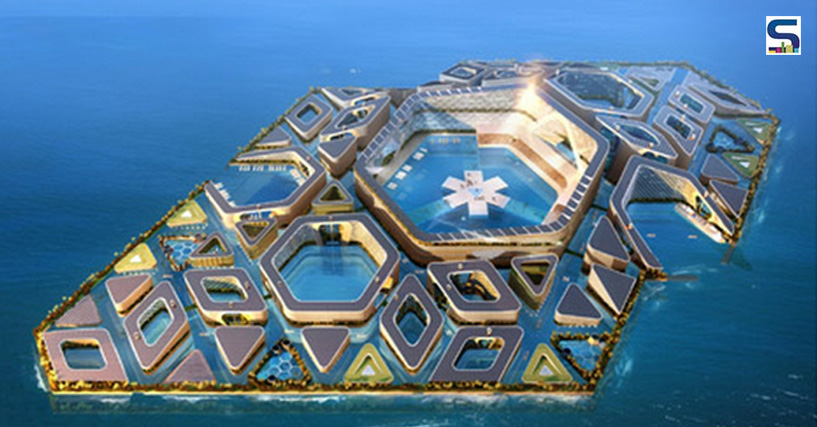
Robots have become an inevitable part of our lives and their expanses are only growing by the hour, such is also true for architecture. Traditionally architecture has been viewed as something to be built by physical labour of the hand. The Roman Colosseum to the Great Pyramids have all been built by hand after all. Well, that in many ways has in all possible ways is likely about to change due to the intervention of robotics in architecture. Robotics in architecture and construction is changing the way architects create design outlooks.
The term “robotics” might often seem daunting as it is very broad and refers to any technology or machine system that is programmed to perform a set of tasks which would otherwise be done manually by humans. What most folks picture in their head when they hear the word robotics, is a walking and talking humanoid made out of metal but in reality, these robots often look like any other construction tool and come in a wide range of shapes and sizes based on the role they’re meant to fulfil. This technology is expected to soon become an essential part of the architectural process and needless to mention all architects who welcome this change now will have a headstart in designing the buildings of the future.

That’s because the term “robotics” is incredibly broad. It refers to any machine or technology system that performs a set of tasks that would normally be done manually by humans. When most people think of robotics, they usually picture walking and talking humanoids made out of metal. In reality, these robots often look like any other construction tool. They come in a wide range of shapes and sizes based on the role they’re meant to fill on-site.
What’s the point of robots in architecture
The implementation of robotics has already taken place in almost every step of the design process of buildings, from initial site analysis to construction, and this is why this technology is so useful for architects, as robotic systems are flexible and can be programmed to solve various facets of architectural problems.
How can robotics aid in Architecture and Construction
The usage of Robotics in architecture and construction can still be classified as an emerging technology but isn’t something entirely new. Architects have already been using robotics in architecture and construction for things like Assembling pieces on-site with the use of long robotic arms, rendering accurate 3D models, developing construction parts using robotic manufacturing tools and many more.
The Architects are still figuring out how this technology can be put to use for more than basic modelling, construction, assembly, on-site troubleshooting, and energy efficiency. In the future, robotics will likely play an even greater role in the architectural process than it does today.
So what might the future hold?
Out of all challenges, the biggest one remains to inhabit the uninhabitable, as Climate change continues to affect the environment to great extents and as land becomes much more of a scarce resource due to the melting of ice caps and water levels rising, the coastal inhabitants will be forced to move to inland; deserts will also see an expansion as the temperatures rise. Architects can exploit this as an opportunity to build habitable structures in areas that would normally be considered unsuitable for human life, perhaps the oceans or deserts.

Who knows maybe now is the time for someone’s long-awaited Atlantis dream to come to life. Robots will be quintessential in building the structures that humans will need to survive in these extreme environments. This can also save precious human resources as architects won’t have to find ways to transport teams of workers in these climates.
Another big thing would be to create sustainable structures: Currently, researchers at the MIT Media Lab are working on developing biopolymers (natural materials like cellulose) that are responsive to their surrounding environments similar to what a living being would. Furthermore, this material is connected to a machine learning network and programmed to change under certain conditions, such as bright daylight, high or low temperatures, or rainy weather to conserve power. However, Machine learning is still something is the making itself, especially when it comes to creativity and spontaneous design inspirations. Although, breakthroughs are being made in technology which could help make robots of the future more unique, which could then come up with fascinating solutions to complex problems that architects had never even considered before.